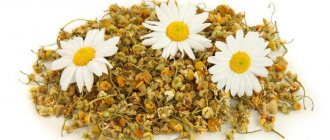Author: Elena N. https://floristics.info/ru/index.php?option=com_contact&view=contact&id=19 Category: Garden plants Published: January 13, 2019Last edits: November 26, 2020
- When to plant
- Growing conditions
- Morning glory Cairo (Ipomoea cairica)
The morning glory vine wrapped itself around a bucket in the well overnight. Don't tear up the fleeting beauty?! I’ll go to my neighbors for water to wash my face. Matsuo Basho
Which plant will help you make your garden gazebo more comfortable and beautiful? Or camouflage the peeling walls of a barn? Or hide long unpainted balcony railings from view? Of course it must be a vine. And it’s better that it blooms with beautiful flowers. And so that it is easy to care for her. A plant under the exotic and gentle name “morning glory” meets all these requirements.
- How to grow morning glory seedlings and plant them in the garden on time?
- When and how to sow morning glory seeds in open ground?
- How to choose the best place for this vine on your site?
- How to care for a plant during the season?
Read our article and you will know everything you need about morning glory.
Planting and caring for morning glory
- Planting: sowing scarified seeds for seedlings in March-April, followed by planting the seedlings in the ground in early June. You can sow seeds directly into the ground in May.
- Flowering: from July to October.
- Lighting: bright sunlight.
- Soil: loose, nutritious, calcareous, not too fertile.
- Watering: regular but moderate.
- Feeding: twice a month with solutions of mineral fertilizers for cacti or flowering plants.
- Pruning: in September.
- Reproduction: seeds and cuttings.
- Pests: aphids, spider mites.
- Diseases: white rust, anthracnose, root, stem, soft or black rot.
Read more about growing morning glory below.
This haiku by the Japanese Basho is dedicated to the morning glory plant, or farbitis. Morning glory (lat. Ipomoea) is a genus of flowering plants, the most numerous of the Convolvulaceae family, numbering more than five hundred species. Its representatives are found in tropical and subtropical regions of the world and are both perennial and annual plants - bushes, trees and vines. Among the plants of the genus Ipomoea there are also food crops - sweet potato and water spinach. The name "morning glory" comes from two Greek words: "ips" - worm and "homoios" - similar, that is, "worm-like", and this definition refers to the rhizome of perennials of the genus morning glory.
In floriculture, vines of this genus are used, the flowers of which open in the morning earlier than all other flowers, for which morning glory is called the “flower of dawn.” It is difficult to imagine that the field bindweed, a nightmare for farmers, is a close relative of the luxurious morning glory, such an ornamental plant in demand among flower growers and gardeners.
- Reproduction by layering of deciduous plants - how and what to do for success
Botanical description
The morning glory plant growing in our gardens is the garden morning glory, a vine that sometimes reaches a length of five meters. Stems are densely leafy, heart-shaped. Large fragrant flowers on long stalks, abundantly covering the stems, open in the early morning and turn behind the sun until they close at noon, although on a cloudy day they close only in the evening. The shape of morning glory flowers, simple or double, resembles a gramophone trumpet, and their colors suit every taste: white, red, pink, blue...
Morning glory blooms from early summer until frost. Perennial in tropical latitudes, morning glory is grown in our gardens as an annual.
Ipomoea purpurea in the landscape
An annual vine can cover a gazebo or fence in a short period of time. During the period of growing green mass, it requires supports, trellises, twine, wire, and mesh.
Ipomoea purpurea perfectly drapes walls and hides all defects. The plant is planted near wicker fences in sunny areas. They are able to tighten a gazebo or a mesh arch in a month. In cloudy weather, the buds do not close for a long time.
Ipomoea purpurea feels good in large pots and forms a lush bush around the support. A pot of morning glory purpurea can be moved from place to place when decorating the site. It will decorate any garden. Carved foliage and an abundance of flowers will become a real find in landscape design.
It is used to shade windows facing south. Another convenient place for a flower is a tree trunk; the vine quickly climbs up the trunk, entwines the branches, and creates a beneficial shadow. An old piece of driftwood will serve as a support. Morning glory will be appropriate in any corner of the garden.
Growing morning glory from seeds
Sowing seeds
Morning glory is propagated by seeds, which remain viable for three to four years after harvest. Sowing morning glory seeds into the substrate is done in mid-May, but they are first scarified (the integrity of the shell is damaged) or simply soaked for a day in water at 25-30 ºC for swelling. If the seeds do not swell, their shell must be pierced with a needle and soaked again.
Particular attention should be paid to the composition of the soil, and this is where difficulties arise, since each species requires a specific substrate. Species of African origin prefer soil for succulent plants with the addition of fine expanded clay; such soil will not suit American varieties, and you will have to make for them a mixture of two parts of leaf humus, adding to it one part each of peat, vermiculite, coke fiber and half a part of fine expanded clay.
The seeds are planted in small cups with a substrate, two to four in each, and covered with glass or film to form a greenhouse. Water the soil as needed, ventilate, remove condensation, maintain a temperature of 18-20 degrees, and seedlings will appear in 10-12 days.
Growing seedlings
When the seedlings grow to 15 cm in height, a cord is tied to the base of the sprout, the second end of which is pulled up and secured: the growing loach will climb along this guide. As the seedlings grow, they will have to be moved once or twice into a large container by transferring them so as not to damage or expose the roots. If you want to get more side shoots, you need to pinch out the seedlings.
Features of growing plants using the seedling method
The first thing you should pay attention to when growing farbitis seedlings is the composition of the substrate. It should be loose and nutritious; the young seedling will need a lot of mineral and organic substances to quickly begin to grow. Experienced gardeners prefer to use the following ingredients:
- leaf soil;
- coconut fiber;
- peat;
- vermiculite
The ratio of components is 2:1:1:1. Mix the ingredients thoroughly, not forgetting to treat the soil by warming it up or watering it with fungicidal solutions.
Peat or plastic cups are used as a planting container. It is better to carry out primary sowing in plastic containers, and picking in peat humus. This is due to the very delicate root system of the plant, which can die from the slightest damage.
Native American seeds have a very durable shell. Since in its homeland the winter is very warm and under natural conditions the seed does not undergo stratification, they resort to another method of preparing seeds - scarification. This method of preparation involves mechanical disruption of the shell.
The seed is treated with a fungicide or potassium permanganate, washed and soaked in water for a day. During this time, the grains will swell and be ready for sowing. If the material persists, it is pricked with a needle (only the shell) and again immersed in water.
Advice! Grinding the seed with coarse sand can help in destroying the shell.
Sow 2-3 seeds into cups filled with substrate. Planting depth is 2.5-3 cm. Water the container generously and cover with film or glass. Maintain the temperature at 18-20⁰C, ventilate the greenhouse daily and remove large drops of condensation from the shelter.
After 10-14 days, young shoots will appear on the surface. Caring for them consists of moderate watering. When the seedlings get stronger and throw out the second pair of leaves, they are picked by transferring them into a large container. Immediately after transplantation, a support is installed next to the growing vine.
Use wooden skewers or tie a string around the base of the seedling and secure the other end. Make sure that the seedling is not crowded in the pot; in case of strong growth, it is permissible to carry out another transplant.
Know! To obtain a bush with several lashes, pinch the crown when the seedling reaches a height of 15 cm.
After the last frost has retreated, plant the bindweed in a permanent location. Place each seedling in a hole along with a lump of earth, first organize drainage from expanded clay or crushed stone with a layer of 5 cm. Lianas are planted in increments of 20-25 cm with the obligatory organization of permanent support.
Planting morning glory
When to plant
Planting of grown morning glory seedlings in open ground is carried out at the end of May or beginning of June. At this time, the soil has already warmed up and there is no need to be afraid of night frosts, which could destroy the young vine.
How to plant
Young shoots are transplanted by transshipment at a distance of 20 cm from each other and a support is immediately installed above them: this can be a lattice of twigs or a stretched fishing line.
You can sow seeds directly into open ground, bypassing the seedling period. This is done at the end of May after frost, choosing a sunny and windless area for planting. Morning glory prefers slightly acidic soil and requires good drainage. Whatever planting method you choose, be careful because morning glory is very poisonous. That is why it is grown outdoors.
Reproduction methods
Growing Farbitis from seeds
Seeds of any variety you like can be purchased in specialized stores or flower departments.
It is recommended to soak the seed material before sowing. The seeds are placed in a container with warm water for 24 hours. They will need that much time to swell. Seeds that have not changed in size should be pricked with a needle and kept in water for another day.
The next stage is sowing the seeds in a container or small cups. To create a greenhouse effect, the container is covered with glass. The “greenhouse” is regularly opened to ventilate and water the soil. For successful seed germination, a constant temperature of +18...+20 degrees is required. After about 10 days, sprouts will appear.
Grown seedlings, which are 15 cm high, need support. Tie a string to the base of the shoot, along which the growing bindweed will rise. Fasten the other end of the lace from above to some support.
The overgrown seedlings are transferred by transshipment to another container of the appropriate size. To get a large number of side shoots, you can pinch the top.
Late May - early June: period of transplanting seedlings to an outdoor flower bed. Young plants are transplanted into prepared holes using the transshipment method. The distance between the bushes is maintained at 20 cm. A support is installed. The ideal option is a lattice made of rods. You can stretch the wire or fishing line.
You can grow morning glory without seedlings. In the last ten days of April, seeds are sown in an open bed to a depth of 2 cm. This method is suitable for regions with early warm spring.
Propagation of Farbitis by cuttings
It is not always possible to propagate morning glory by seeds, although this is the most effective way. Some varieties are recommended to be propagated by cuttings.
The cut stem of the plant is divided into cuttings, leaving 2 internodes on each. The approximate length of the cutting should be fifteen centimeters, no less. An angular cut is made under the node at a distance of 1.5 cm. The leaf blades are removed and the cutting is placed in water. Within a week, roots will appear on the cuttings. Morning glory can be planted in open ground or in a pot. The suitable breeding period is April – June.
Morning glory care
Growing conditions
Caring for morning glory is simple: water regularly, but moderately, so that water stagnation does not form in the roots: from May to August - without waiting for the soil to dry out, and from September - after the soil has dried.
Fertilize during the period of active growth every 2-3 weeks with fertilizer for ornamental flowering plants or for cacti. However, an excess of fertilizers, especially nitrogen-containing ones, can lead to intensive formation of foliage, but morning glory does not bloom, so it is important to observe the measure when feeding. The concentration of fertilizers should be the same as for indoor plants.
From time to time, morning glory needs pruning: you need to remove damaged or diseased-looking shoots; it is best to trim the vine in September, putting the plant in order before the dormant period. In the spring, pruning is carried out to thin out the bush, leaving no more than three stems in each. Sometimes you have to thin out morning glory during the growing season.
Propagation by cuttings
Some types of morning glory are propagated vegetatively using cuttings. For example, morning glory sweet potato. From the cut shoots, cuttings are cut 15-20 cm long with two internodes, and the lower cut should pass at an angle of 45º 15 mm below the node. After removing the leaves from the bottom, the cuttings are placed in water.
- Hydrangea paniculata
How to grow delicious sweet potatoes in our gardens - detailed instructions
The roots appear very quickly, on days 3-5, and the shoots can be immediately transplanted into the ground and grown at a temperature of 20-25 ºC. Complete rooting in the ground occurs within a week. Terms for rooting cuttings: March-April - rooting of green cuttings, in the summer - rooting of both green and semi-lignified cuttings.
Pests and diseases
Among the diseases of morning glory are fungal diseases (white rust, anthracnose, various types of rot - root, stem, black, soft), viral diseases (about twenty different viruses) and the physiological disease white edema.
The plant usually becomes infected with fungal diseases through the soil, especially with chronic waterlogging. Some fungal diseases can be cured by removing rotten areas and treating morning glory with a fungicide, but diseases such as soft, root and stem rot cannot be treated, so specimens infected with them must be destroyed.
Viral diseases also cannot be treated: affected plants must be burned so as not to infect healthy ones.
White swelling is not an infectious disease; in addition, only plants grown in a greenhouse or apartment suffer from it. It occurs when too frequent watering is combined with high air humidity and too low a temperature and is expressed in the appearance of blisters and bumps on the leaves, which gradually turn brown from green and yellowish. Soon the leaves turn yellow and fall off. Try to follow the agrotechnical rules for growing morning glory, and this problem simply will not arise.
Of the pests, the main enemies of morning glory are aphids and spider mites. You can get rid of aphids by treating the plant with soapy water, and spider mites are afraid of spraying with cold water, but these methods only work if you find uninvited guests right away. If they have settled down and settled in, then both aphids and spider mites will have to be fought with a systemic insecticide such as Akarina, Karbofos, Fitoverm or Actellika.
Pest and disease control
Morning glory has very few diseases and pests, especially with proper care. Its main garden enemies are spider mites and aphids. To combat, use insecticides and carefully remove damaged areas. To prevent ticks, spraying in hot weather is enough, and the proximity of fragrant herbs helps against aphids.
Occasionally, morning glory suffers from fungus and rot. A damaged plant is difficult to save, and it is better to remove it from the site as soon as possible. But there is also good news. With timely thinning and compliance with agricultural technology, and especially humidity conditions, diseases are unlikely.
Photo: 2sotki.ru
Eschscholzia (60 photos): types, planting and care in open ground
How to collect seeds
Experts recommend collecting seeds from the second and third buds. When the flowers wither and a brown box forms in their place, let it dry and open slightly. This will happen in about a month. Pour the seeds from the box into a paper bag and write the name of the variety on it. As already mentioned, morning glory seeds remain viable for three to four years.
Morning glory after flowering
Morning glory in our latitudes is grown as an annual, so in the fall, when the leaves wither and fall off, you can cut the morning glory stems and dig up the ground, removing the rhizome. Next spring you will sow the seeds and a new morning glory will grow.
Or it may happen that you don’t have to sow the seeds, since morning glory reproduces well by self-sowing, and if seeds from ripened capsules spilled into the place where it grew this year, then it is likely that next year they will begin to grow in this place young shoots of morning glory.
Types and varieties
Of the more than 500 species of morning glory, only 25 are grown in culture. Let's briefly talk about the most popular of them.
Morning glory Cairo (Ipomoea cairica)
Originates from Asia and Australia, its shoots grow up to 5 m long. They are so densely strewn with blue flowers that morning glory looks like a real carpet. The leaves are lobed, palm-shaped, carved.
In the photo: Morning glory Cairo (Ipomoea cairica)
Morning glory (Ipomoea purpurea)
An annual liana whose pubescent stem reaches 8 meters. Leaves are glabrous, oval or lanceolate, opposite. Single red, dark purple, purple, blue, white or pink gramophone flowers up to 7 cm long. There are varieties with variegated and even double flowers. The tropical belt of America is considered the homeland of morning glory. Varieties: Starfish, Scarlett O'Hara, Nochka, Giselle.
In the photo: Purple morning glory (Ipomoea purpurea)
Morning glory Nile (Ipomoea nil, Ipomoea imperialis)
Or in Japanese, asagao (morning face) is a highly branched annual vine up to 3 m long. The leaves are large, broadly oval, opposite, long-petiolate, dark green. Funnel-shaped flowers of red, soft or dark blue, pink or purple with a diameter of up to 10 cm. This morning glory blooms from mid-summer to October. Varieties: semi-double Pikoti blue or red with white edging, hybrid Serenade - double corrugated flowers of dark red or lilac color 8 cm in diameter.
- Will a live Christmas tree survive in a container if it is planted in the ground after the holidays are over?
In the photo: Morning glory Nil (Ipomoea nil, Ipomoea imperialis)
Morning glory (Ipomoea tricolor)
Or red-blue morning glory (Ipomoea rubro-caerulea) - native to the tropics of America. A perennial used in cultivation as an annual plant. The stem reaches a length of 4-5 m. The leaves are large, opposite, heart-shaped, bare, wrinkled, the petioles are long. Funnel-shaped flowers 8-10 cm in diameter are collected in bunches of 3-4 pieces: pale blue with a white tube, but when they fade, they become pink-purple. This morning glory blooms from early June until the first frost.
Some varieties contain psychotropic substances used in medicine. Varieties popular in floriculture: Pink Lollipop, Blue Star, Sky Blue, Flying Saucer.
In the photo: Ipomoea tricolor (Ipomoea tricolor)
Morning glory (Ipomoea hederacea)
An annual liana from the American tropics. The branched stem reaches a length of 2-3 meters, the leaves are large, heart-shaped, three-lobed, similar to ivy leaves. Funnel-shaped flowers with a diameter of about 5 cm are usually sky blue, sometimes with a white border, but they can be red, burgundy, or pink. They are collected two or three on a long peduncle. They bloom from July to mid-autumn. The Roman Candy variety with variegated white-green leaves is even grown as an hanging plant.
In the photo: Ipomoea hederacea
Morning glory (Ipomoea noctiflora)
Also from tropical America. The stem is up to 3 m long, shoots up to 6 m, large heart-shaped leaves, fragrant white flowers are also large - up to 10 cm, open at night and close with the first rays of the sun, and those unfamiliar with this mystery of Farbitis moonflower ask why their morning glory does not bloom. But on a cloudy day, the flowers close only in the evening, and you will be able to appreciate their amazing delicate beauty. This morning glory blooms from July-August to October.
Quamoclites
These are morning glories with lacy carved foliage and small tubular-shaped flowers. Among the most popular in culture: feathery quamoclit (Quamoclit pennata), Slaughter's quamoclit, or cardinal vine (Quamoclit x sloteri), fiery red quamoclit (Quamoclit coccinea) and lobed quamoclit (Quamoclit lobata).
In the photo: Quamoclit
In addition to the described species and their varieties, such types of morning glory as Brazilian, palmate, Moorish, lobed and others are slightly less common in cultivation.
Common types of morning glory flower
The most popular types in floriculture are:
Morning Glory (Ipomoea Quamoclit)
Characterized by original openwork leaves. The flowers are tubular, small, usually red. The bushes form an attractive flowering carpet, making the species widespread in garden design.
Photo of the extraordinary Ipomoea quamoclite
The most popular varieties are Kvamoklit pinnate and red cardinal or Slaughter's Kvamoklit.
Blue morning glory (Ipomoea violacea)
Combines two species: tricolor, red-blue (tricolor, rubro-caerulea). It is characterized by a large vine that blooms in July.
The intense climbing green of the shoots and abundant flowering make it an ideal flower for vertical gardening.
Morning glory sweet potato (Ipomoea batatas)
Characterized by a decorative appearance. The roots of this type of vine are eaten.
Decorative species have a bright crown of different shades, consisting of palmate-lobed foliage.











